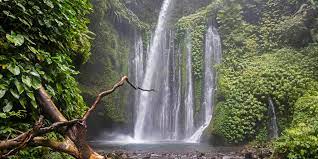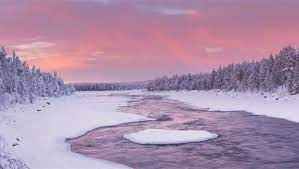Rainforest
"Rainforests: Earth's Biodiversity Hotspots"
A rainforest is a lush and diverse type of terrestrial ecosystem characterized by high levels of annual rainfall, dense vegetation, and extraordinary biodiversity. These ecosystems are found in tropical and subtropical regions of the world and are often referred to as the "lungs of the Earth" due to their critical role in absorbing carbon dioxide and producing oxygen. Here's a detailed description of rainforests:
Climate: Rainforests are typically located near the equator, where they experience consistently warm temperatures throughout the year. They receive abundant rainfall, often exceeding 100 inches (2,500 millimeters) annually, resulting in a humid and wet environment.

Vegetation: The hallmark of rainforests is their towering canopy of trees that form a dense overhead cover, creating a continuous shade below. These trees can reach staggering heights, with some species exceeding 200 feet (60 meters). Beneath the canopy, there are multiple layers of vegetation, including understory shrubs, vines, and ground-level plants.
Biodiversity: Rainforests are unparalleled in terms of biodiversity. They are home to a vast array of plant and animal species, many of which are found nowhere else on Earth. Some of the world's most iconic and endangered species, such as jaguars, orangutans, toucans, and poison dart frogs, inhabit these ecosystems.
Flora: Rainforests house a remarkable variety of plant life, including numerous species of hardwood trees, epiphytic plants that grow on other plants, and a wealth of medicinal and aromatic plants. The plant diversity often includes vibrant orchids, bromeliads, and towering tree species like mahogany and kapok.
Fauna: Rainforests are teeming with wildlife, from tiny insects to large mammals. They are a paradise for birdwatchers, with many brightly colored and exotic bird species like macaws, parrots, and toucans. Various primates, big cats, reptiles, amphibians, and insects also thrive in these habitats.
Indigenous Peoples: Many indigenous communities have lived in rainforests for generations, relying on the forest for their livelihoods and cultural practices. These communities often have deep knowledge of the forest's resources and play a crucial role in its conservation.
Threats: Unfortunately, rainforests are under severe threat from deforestation, logging, mining, agriculture, and climate change. The destruction of these vital ecosystems poses a significant risk to global biodiversity, climate regulation, and indigenous cultures.
Conservation: Conservation efforts are essential to protect rainforests. Various organizations and governments are working to establish protected areas, promote sustainable practices, and raise awareness about the importance of preserving these invaluable ecosystems.
In summary, rainforests are rich, complex ecosystems that serve as critical components of the Earth's ecological balance. Their extraordinary biodiversity, unique flora and fauna, and crucial role in mitigating climate change make them one of the most important natural wonders on our planet. Efforts to conserve and protect rainforests are vital for the well-being of our global environment.
A rainforest is a lush and diverse type of terrestrial ecosystem characterized by high levels of annual rainfall, dense vegetation, and extraordinary biodiversity. These ecosystems are found in tropical and subtropical regions of the world and are often referred to as the "lungs of the Earth" due to their critical role in absorbing carbon dioxide and producing oxygen. Here's a detailed description of rainforests:
Climate: Rainforests are typically located near the equator, where they experience consistently warm temperatures throughout the year. They receive abundant rainfall, often exceeding 100 inches (2,500 millimeters) annually, resulting in a humid and wet environment.

Vegetation: The hallmark of rainforests is their towering canopy of trees that form a dense overhead cover, creating a continuous shade below. These trees can reach staggering heights, with some species exceeding 200 feet (60 meters). Beneath the canopy, there are multiple layers of vegetation, including understory shrubs, vines, and ground-level plants.
Biodiversity: Rainforests are unparalleled in terms of biodiversity. They are home to a vast array of plant and animal species, many of which are found nowhere else on Earth. Some of the world's most iconic and endangered species, such as jaguars, orangutans, toucans, and poison dart frogs, inhabit these ecosystems.
Flora: Rainforests house a remarkable variety of plant life, including numerous species of hardwood trees, epiphytic plants that grow on other plants, and a wealth of medicinal and aromatic plants. The plant diversity often includes vibrant orchids, bromeliads, and towering tree species like mahogany and kapok.
Fauna: Rainforests are teeming with wildlife, from tiny insects to large mammals. They are a paradise for birdwatchers, with many brightly colored and exotic bird species like macaws, parrots, and toucans. Various primates, big cats, reptiles, amphibians, and insects also thrive in these habitats.
Indigenous Peoples: Many indigenous communities have lived in rainforests for generations, relying on the forest for their livelihoods and cultural practices. These communities often have deep knowledge of the forest's resources and play a crucial role in its conservation.
Threats: Unfortunately, rainforests are under severe threat from deforestation, logging, mining, agriculture, and climate change. The destruction of these vital ecosystems poses a significant risk to global biodiversity, climate regulation, and indigenous cultures.
Conservation: Conservation efforts are essential to protect rainforests. Various organizations and governments are working to establish protected areas, promote sustainable practices, and raise awareness about the importance of preserving these invaluable ecosystems.
In summary, rainforests are rich, complex ecosystems that serve as critical components of the Earth's ecological balance. Their extraordinary biodiversity, unique flora and fauna, and crucial role in mitigating climate change make them one of the most important natural wonders on our planet. Efforts to conserve and protect rainforests are vital for the well-being of our global environment.
#RainforestConservation
#SaveOurRainforests
#JungleAdventures
#AmazonRainforest
#ProtectTheAmazon
#BiodiversityMatters
#TropicalRainforests
#GreenPlanet
#WildlifeWednesday
#RainforestWarriors
#SaveOurRainforests
#JungleAdventures
#AmazonRainforest
#ProtectTheAmazon
#BiodiversityMatters
#TropicalRainforests
#GreenPlanet
#WildlifeWednesday
#RainforestWarriors



Comments
Post a Comment